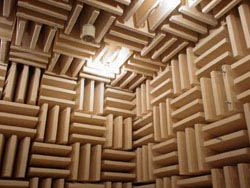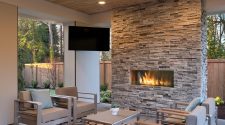Sound is more complicated that many people realize. For example, you might think that the sound from another room is coming through the wall as a direct sound. However, the sound may actually be flanking sound. What is flanking sound and what are the most common causes? More importantly, how can you address this noise issue?
What Is Flanking Sound?
Flanking sound is noise that comes from unexpected areas. For example, instead of the noise coming through the walls, it may come through the door by coming out the door of another room and into your room. Another example is sound that goes around an object rather than through it. For obvious reasons, flanking sound can be harder to address because you may not know where the sound in coming from. A better understanding of flanking sound can help you better soundproof a room.
What Are the Causes?
One of the biggest causes can be poor quality doors that allow sound to easily pass from room to room, even rooms that are beside each other. Another interesting cause of flanking sound are power outlets. Lastly, duct work can be a serious problem for allowing sound to travel through your home. Don’t believe it? Have someone in your basement talk while standing next to an heat outlet and stand next to an outlet on an upper floor. You’ll quickly see how much sound travels through the duct work.
How to Address the Issue
The first step is to address the door of the room you’re trying to soundproof. This can easily be done by investing in some acoustic panels or in an acoustic door which is not only solid, but has built in seals to help keep out sounds. The easiest way to address electric outlets is to use acoustic caulk around the outlet. You can also use acoustic padding to provide additional soundproofing. Lastly, duct work can be addressed by creating a soffit around the duct in the room you’re trying to soundproof. This will deaden the sound.
It’s not enough to address the direct sounds that enter a room you’re trying to soundproof. To get the best noise reduction, you must also address flanking sound. The sound that enters the room indirectly can be just as annoying as direct noise. The good news is flanking sound can be addressed rather easily through installing a new door, using acoustic caulk around electrical outlets, and creating a soffit to deaden sound around a duct outlet. Obviously this means more work, but it will make a big different in how quiet the room is.
















